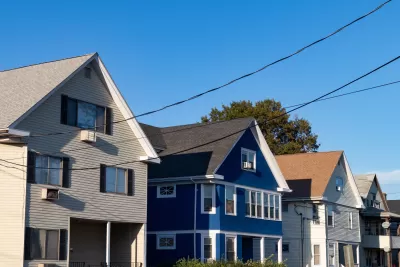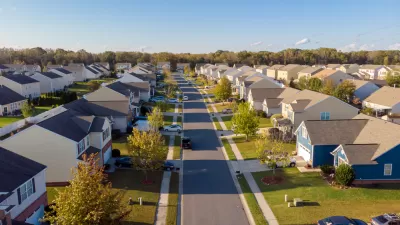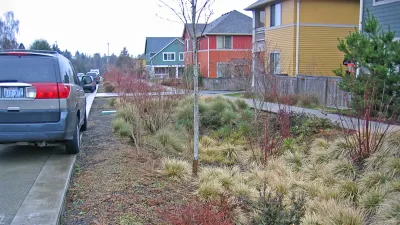An analysis of Connecticut zoning laws finds single-family neighborhoods are associated with higher incomes and whiter populations than the 2 percent of the state that permits multifamily housing.

A new study from the Urban Institute adds to the growing body of evidence linking single-family zoning to segregation and exclusion in housing. Jared Brey outlines the results in Governing, noting that the study used the Connecticut Zoning Atlas to analyze zoning laws in Connecticut, where 62 percent of land is designated for single-family housing only. Meanwhile, building housing with more than two units is only permitted on 2 percent of the state’s land.
According to the study authors, “Single-family areas are associated with higher home values, higher median incomes and greater proportions of white people than other areas, according to the report.” The report concludes that “strict zoning regulations … are associated with inadequate access to affordable housing and with the segregation of people by income, race and ethnicity.”
As more and more data bears out the impact of single-family zoning, researchers hope “It could add understanding into hot debates about how zoning is linked with affordability and exclusion, but could also help policymakers make decisions about things like small-business development and climate adaptation.”
FULL STORY: Single-Family Zoning Linked With Income and Race Segregation

Alabama: Trump Terminates Settlements for Black Communities Harmed By Raw Sewage
Trump deemed the landmark civil rights agreement “illegal DEI and environmental justice policy.”

Planetizen Federal Action Tracker
A weekly monitor of how Trump’s orders and actions are impacting planners and planning in America.

The 120 Year Old Tiny Home Villages That Sheltered San Francisco’s Earthquake Refugees
More than a century ago, San Francisco mobilized to house thousands of residents displaced by the 1906 earthquake. Could their strategy offer a model for the present?

In Both Crashes and Crime, Public Transportation is Far Safer than Driving
Contrary to popular assumptions, public transportation has far lower crash and crime rates than automobile travel. For safer communities, improve and encourage transit travel.

Report: Zoning Reforms Should Complement Nashville’s Ambitious Transit Plan
Without reform, restrictive zoning codes will limit the impact of the city’s planned transit expansion and could exclude some of the residents who depend on transit the most.

Judge Orders Release of Frozen IRA, IIJA Funding
The decision is a victory for environmental groups who charged that freezing funds for critical infrastructure and disaster response programs caused “real and irreparable harm” to communities.
Urban Design for Planners 1: Software Tools
This six-course series explores essential urban design concepts using open source software and equips planners with the tools they need to participate fully in the urban design process.
Planning for Universal Design
Learn the tools for implementing Universal Design in planning regulations.
Clanton & Associates, Inc.
Jessamine County Fiscal Court
Institute for Housing and Urban Development Studies (IHS)
City of Grandview
Harvard GSD Executive Education
Toledo-Lucas County Plan Commissions
Salt Lake City
NYU Wagner Graduate School of Public Service





























